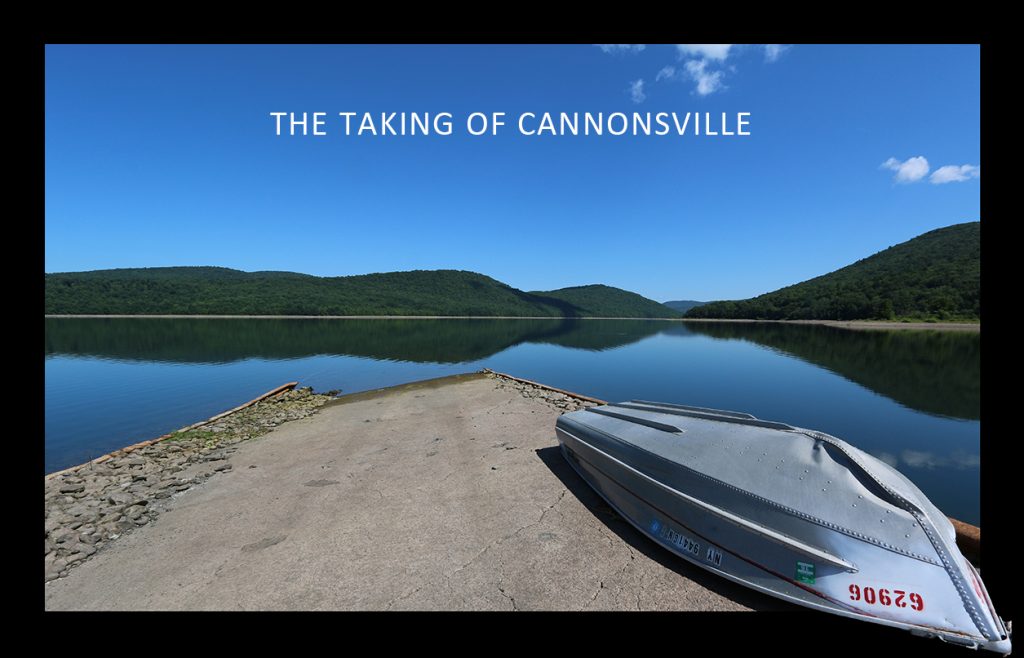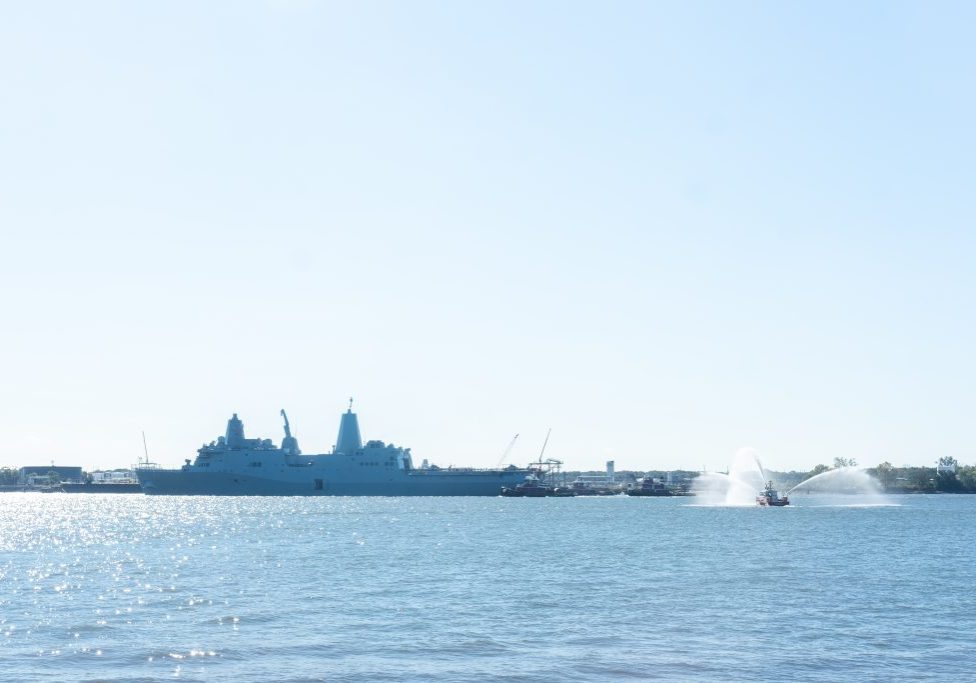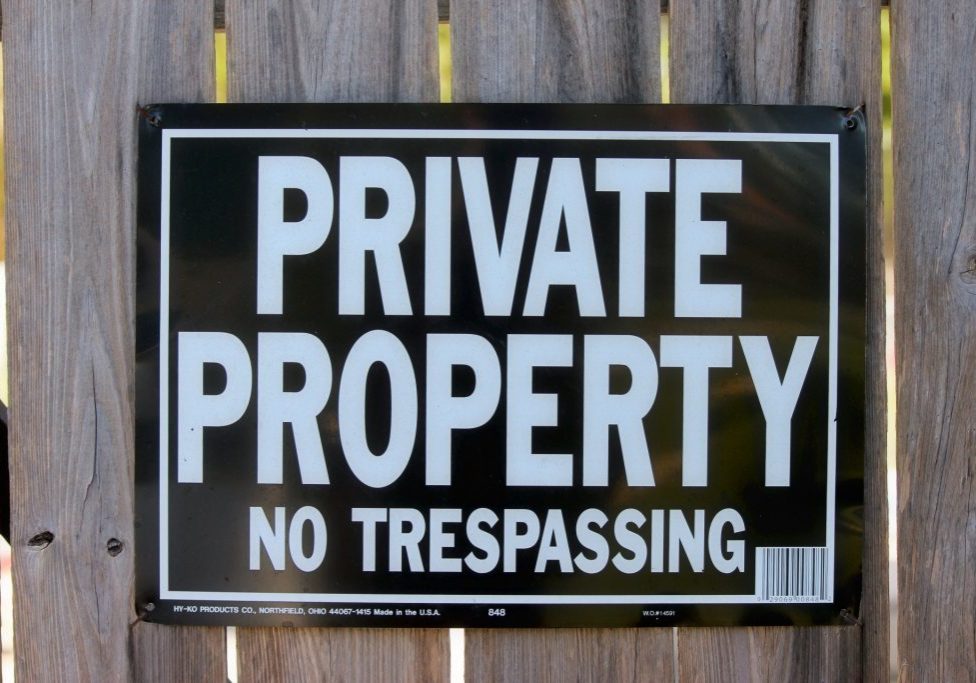
How the town of Cannonsville became the Cannonsville Reservoir
| February 3, 2024
In the 1960s, the town of Cannonsville and four of its neighboring communities were razed.
A total of 1,000 residents were displaced from the communities spread over 20,000 acres. Homes and businesses were demolished and graves were relocated to make room for a reservoir to supply water to New York City.
The Time and the Valleys Museum, whose mission is to educate visitors on the history and future of access to clean water in the Catskills, hosted a virtual event last month with guest speaker Roger Luther on the subject of the town of Cannonsville’s destruction.
Luther is the historian for New York’s Broome County and the executive director of the Preservation Association of the Southern Tier, an organization that seeks to promote and protect sites of historic significance in Broome and Tioga Counties.
According to Luther, visitors who come to the former site of the town of Cannonsville nowadays will find only the picturesque expanse of the reservoir.
“There’s really no way of knowing what used to be down there under the water,” he said. “It looks like a picture postcard and it’s a great place to go for a Sunday drive.”
“[Lands] that for nearly 200 years provided a home to eight generations of residents and countless generations of Indigenous people who lived, worked and raised their families there are all hidden,” he added.

Scars remain
The town of Cannonsville, which had a population of about 400, was located several miles east of the Broome County line, but the scars left by its destruction are felt there, as Luther learned by interviewing former residents.
To tell the story of the town and its destruction, Luther delved into information preserved by the Broome County Historical Society, Deposit Historical Society, Delaware County Historical Association and the New York City Department of Environmental Protection.
He’s given his presentation on Cannonsville several times, both virtually and in-person, since he began looking into the history of the town 25 years ago.
The beginning of the end for Cannonsville came when New York State began to look for ways to meet New York City’s growing demand for water.
On the last day of December 1949, the state announced its intentions to build a reservoir on the West Branch of the Delaware River, a plan that would destroy Cannonsville and four neighboring towns, Beerston, Granton, Rock Royal and Rock Rift.
The New York State Water Power and Control Commission held several public hearings where proponents and opponents of the project could speak. Properties were seized for the reservoir and the owners were compensated, though some believed they were not paid what the property was worth.
“To this day, the feelings are very raw about what happened there, and the residents stuck it out ‘til the end,” Luther said. “They put up a good fight, but it was a losing battle.”
Construction of the Cannonsville reservoir started in 1955, and residents were required to vacate their properties by 1962.
“When I first became interested in this story, I assumed that there might be some ruins still down underwater, but that’s not the case,” Luther said. “They absolutely scraped the area clean.”
The dead were relocated as well
Houses, barns, businesses, churches and schools were burnt or demolished with bulldozers. The residents of Cannonsville were not the only ones to be relocated.
Cemeteries in neighboring towns and counties received the remains of 2,123 deceased. The majority went to Pepacton Cemetery, but bodies were transported to several other cemeteries in the region as well.
Read more: Pepacton Cemetery to have gravestones cleaned and repaired
There’s a film about the destruction of the town, “Indian Summer; The Cannonsville Story,” from 1955.
“A lot of the footage in the film is from the actual clearing of the land, and they wove it together with this story about an old man, who was being driven from his property,” Luther said.
For further reading on the subject, Luther recommends “Memories,” by Helen Schriver Zandt, who herself was a former resident of Cannonsville, which features a compilation of memories of the town.
A couple of material fragments of Cannonsville remain.
A memorial dedicated to residents who fought in the world wars was relocated to Speedwell Mountain, which is near the reservoir, and it’s possible to view a covered bridge that used to run through the town at the Old Mill Village Museum in New Milford, Pa., about 35 miles north of Scranton.
A section of the Pepacton Cemetery is dedicated to Cannonsville burials, and there among other residents, visitors can find the grave of the town’s founder, Benjamin Cannon.








I do not understand why most references state that the water didn’t flood the towns until 1964-65. I have old newspaper clippings that show the town was destroyed by 1963 and under water by that fall of 1963.
1964?????
1965????
I lived it. Cannonsville was my hometown till the age of 7. We moved out in late 1961. My grandpa was one of the last to leave. He had a farm on Johnny Brook road.
When NYC decided to take what was not there’s, you destroyed my grandparents will to live. I was young at the time,,but remember it well. The heavy equipment in the river acrossed the road from their house. I also remember the anger and the tears at the last “Old Home Day”
We always stopped to take a leak in the water when we drove by!